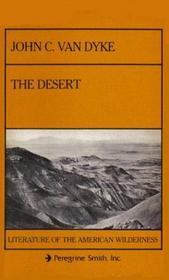It sounded like a very interesting story about a amn who sets off with his dog and indian pony into the western wilderness, not very well equipped. The author was so boring I could not get past the introduction.
Search -
The Desert
The Desert
Author:
In the early summer of 1898, John C. Van Dyke, an asthmatic forty-two-year-old art historian and critic, rode an Indian pony out of the Hemet Valley, and headed southeast into the Colorado desert. With his dog, his guns, and few supplies, this sickly aesthete wandered, mostly alone, for nearly three years across the deserts of California, Arizon... more »
Author:
In the early summer of 1898, John C. Van Dyke, an asthmatic forty-two-year-old art historian and critic, rode an Indian pony out of the Hemet Valley, and headed southeast into the Colorado desert. With his dog, his guns, and few supplies, this sickly aesthete wandered, mostly alone, for nearly three years across the deserts of California, Arizon... more »
ISBN-13: 9780879050733
ISBN-10: 087905073X
Publication Date: 1980
Pages: 233
Rating: 1
ISBN-10: 087905073X
Publication Date: 1980
Pages: 233
Rating: 1
0.5 stars, based on 1 rating
Publisher: Peregrine Smith
Book Type: Paperback
Other Versions: Hardcover
Members Wishing: 1
Reviews: Member | Amazon | Write a Review
Book Type: Paperback
Other Versions: Hardcover
Members Wishing: 1
Reviews: Member | Amazon | Write a Review
Please Log in to Rate these Book Reviews
Genres:
- Science & Math >> Nature & Ecology >> General
- Science & Math >> Nature & Ecology >> Nature Writing & Essays
- Outdoors & Nature >> Ecosystems >> Deserts




